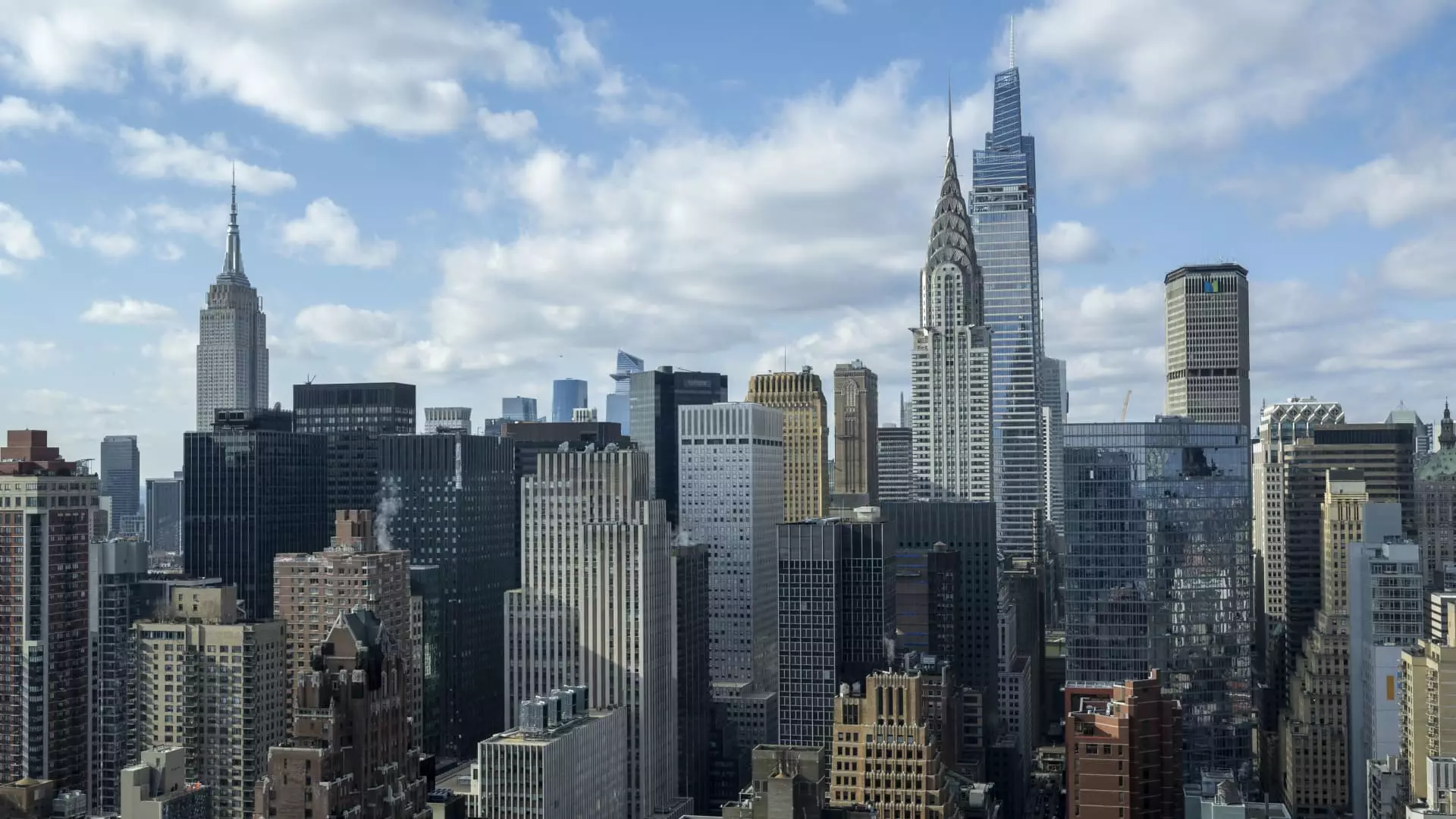The commercial real estate landscape is undergoing a notable transformation as demand for office space in New York City surges back to pre-pandemic levels. This revival is not merely coincidental; it stems from a combination of factors including a growing number of employees returning to their physical workplaces, as well as proactive strategies from employers seeking to reintegrate their workforce. Recent data indicates that office demand experienced a remarkable 25% increase in the fourth quarter compared to the same period last year, as reported by VTS, a company specializing in tracking tenant tours, which serve as an early indicator of upcoming leasing activities.
As we examine the impetus behind this resurgence, it’s crucial to appreciate the unique cultural and economic environment of New York City. Nick Romito, the CEO of VTS, emphasizes how the city’s intrinsic qualities, particularly within the finance and technology sectors, play a vital role in this transition back to onsite work. New York is not just any market; it features a diverse economy supported by various industries that rely heavily on in-person collaboration, suggesting that the demand for office space may be more resilient here than in other cities.
Additionally, SL Green Realty Corp, a real estate investment trust (REIT) focused primarily on Manhattan’s office and retail sectors, has recently echoed these sentiments. Although the company fell short of revenue expectations, analysts pinpointed indications of tightening within the office market, which could hint at a more competitive landscape moving forward. SL Green’s CEO, Marc Holliday, provided a look into future projections, citing an expected addition of approximately 38,000 office-using jobs in 2025, with the majority stemming from the finance, business services, and information technology sectors. This prediction transforms into billions of square feet of potential occupancy, underscoring the fact that a considerable proportion of these roles won’t be subject to remote working arrangements.
As workplace dynamics shift, companies are increasingly mandating their employees to return to the office multiple times a week—frequently four to five days. This rehabilitation of office-taking habits is fueling positive expectations for future leasing demands, with SL Green anticipating an occupancy rate that might exceed 93% in 2024. A significant development contributing to this momentum is the agreement made by tech titan IBM, which has recently signed a lease for a 92,663 square foot expansion at One Madison Avenue, solidifying its commitment by increasing its total office space at that location to over 362,000 square feet. IBM’s expansion is emblematic of the burgeoning confidence tech companies have in New York City as a hub for growth and operations.
Nonetheless, while New York City may be recognized as a frontrunner in the post-pandemic office recovery, we must not overlook the progress made in other markets across the nation. For instance, San Francisco has noted an impressive annual growth rate of 32% in office demand, albeit starting from a significantly lower baseline than New York. Seattle and Chicago have also seen robust growth at approximately 15%, reflecting a broader national trend toward hybrid work environments that balance remote work with the necessity of on-site presence.
Ryan Masiello, VTS’s Chief Strategy Officer, highlights a notable distinction: while some cities quickly pivot back to traditional office formats, the larger national narrative depicts a slower, yet steady recovery trajectory. Nationally, the fourth quarter witnessed a 12% increase in demand relative to the prior quarter, challenging historical norms of declining demand during this period. This uptick is particularly compelling given the broader economic backdrop characterized by uncertainty and labor market fluctuations.
The recent growth in demand for office space is not simply a return to normalcy but a complex interplay of strategic corporate decisions, economic forecasts, and shifting workplace cultures. As long as companies continue to emphasize the importance of in-person collaboration and innovate their office spaces to meet evolving employee needs, New York City and other recovering markets appear poised for sustained growth in commercial real estate. As such, while challenges remain, the underlying confidence in office space recovery displays optimism for a vibrant economic future. The evolving workplace, blending flexibility with in-person opportunities, will potentially reshape how we perceive office environments and their significance in urban landscapes.

